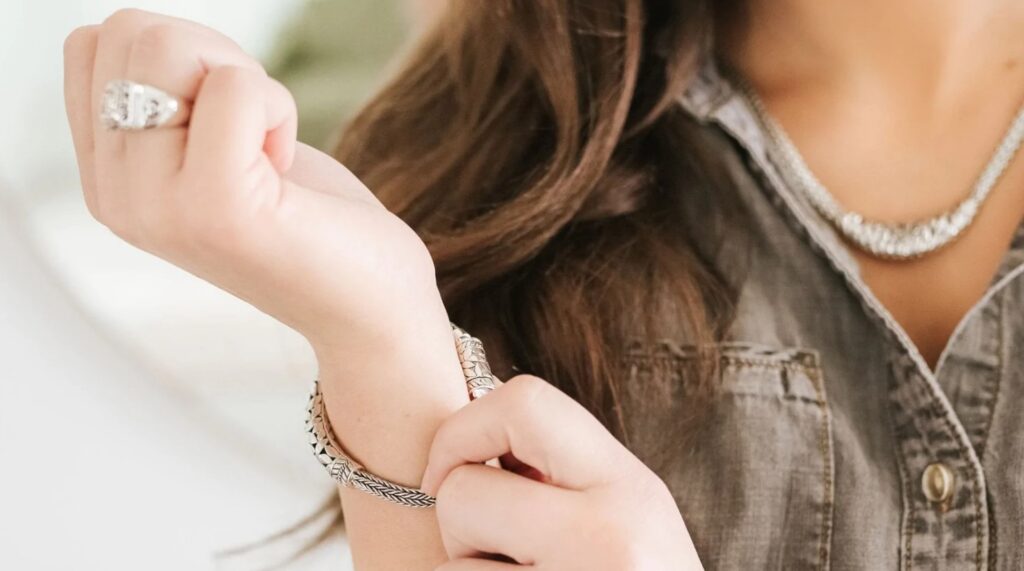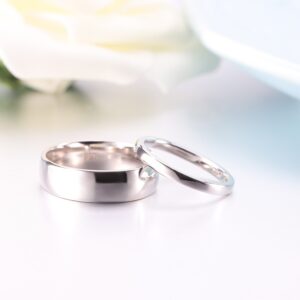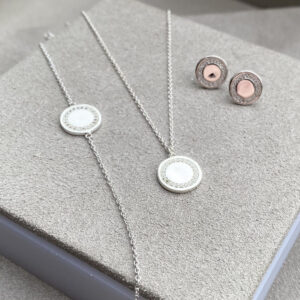
If you have an interest in designing silver jewelry, it is crucial to understand exactly which type of silver will best suit your needs.
Today, we’re going to take a few minutes to explore the differences between pure silver and sterling silver. By learning more about the attributes of each grade of silver, you can make the right choice for both your business and your customer.

1)PURE SILVER / FINE SILVER
Even though it’s called Pure Silver (also frequently referred to as Fine Silver), it is actually 99.99% pure. The 0.01% consists of trace volumes of impurities–though the amount of them is so small, that it makes them effectively negligible.
Pure silver has a great shine and a beautiful luster, and it is highly resistant to tarnishing over time. Unfortunately, these benefits come with a catch (aside from the higher price tag): pure silver is extremely soft and highly malleable, meaning that it can bend and lose its shape. Additionally, its softness also makes it highly vulnerable to scratches, dents, and other damage.
Despite these challenges, pure silver can still find uses in jewelry. Pure silver can sometimes be a viable option to make jewelry that won’t regularly be experiencing friction against the skin. These restrictions might disqualify it from being an ideal choice for rings or bracelets, for example, but could still allow it to be used for items like earrings, necklaces, or pendants.
There is one other benefit that pure silver has to offer: it’s hypoallergenic. In rare cases, for some wearers with particular skin allergies, the copper and other metals found in less pure silver can cause irritations or other allergic skin reactions. While uncommon, it is nevertheless important to be aware of in order to properly accommodate clients with such needs.
2)STERLING SILVER
While pure silver is 99.99% silver, sterling silver is 92.5%. The extra 7.5% is comprised of copper, with the occasional use of zinc and nickel as well. This addition significantly strengthens and hardens the silver, making it much more resistant to wear and damage over time.
Because of this added durability, sterling silver is the most common grade used in silver jewelry. If you’d like to learn more about how to verify if your jewelry is sterling silver, please visit our guide HERE.
Perhaps one of the only major trade-offs in selecting sterling silver over pure silver is sterling silver’s vulnerability to tarnishing. The supplemental metals in sterling silver–copper, zinc, and nickel–all tarnish much faster and more easily than silver. As a result, their presence results in sterling silver tarnishing more quickly than pure silver. Fortunately, the darkening caused by the tarnishing can be easily removed with the use of a polishing cloth or silver polish. Do note that these treatments may need to be applied more frequently in more humid environments, however, as humidity can be a leading accelerant for tarnish.
Now that you have a clearer understanding of the distinct differences between pure silver, and sterling silver, you can have a better sense of which option may be the best choice for your upcoming and future designs. At Royi Sal, we have had decades of experience working with a full range of purity levels, to find the perfect material to produce beautiful, high-quality jewelry that meets and exceeds your expectations
If you have any questions, you can reach us by phone at +66 (0) 2 294 7103, by email at [email protected], or book a meeting with our team.
Share this post


